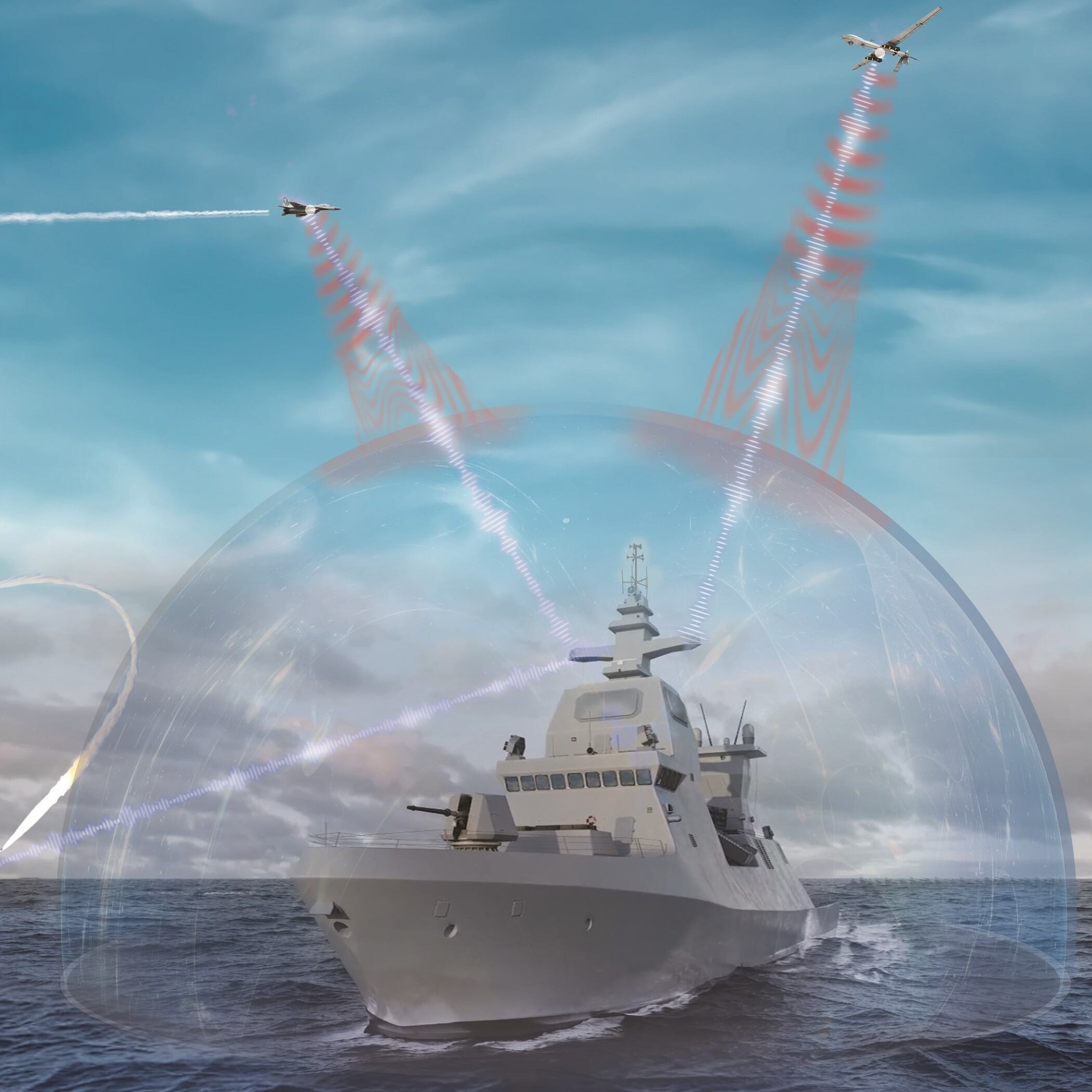JERUSALEM — Israel Aerospace Industries has unveiled its new Scorpius family of electronic warfare systems based on active electronically scanned array technology that provides the capability to detect and simultaneously confront threats over a long range.
“The system is able to target a range of threats, including: UAVs, ships, missiles, communication links, low probability of interception (LPOI) radars, and more. Scorpius effectively disrupts the operation of their electromagnetic systems, including radar and electronic sensors, navigation, and data communications,” IAI said in a statement.
Added Elta Systems, an IAI subsidiary that also makes the radar for the Iron Dome air defense system: “With AESA’s multi-beam capability, Scorpius can simultaneously scan the entire surrounding region for targets, and deploy narrowly focused beams to interfere with multiple threats across the electromagnetic spectrum.”
The transition from focusing on a single threat to now multiple threats at once meshes with the modern battlefield that hosts drones and other advanced platforms, said Gideon Fostick, a marketing director at Elta.
“Everything is vulnerable to attack, confusion and deception, so this system covers the whole sky and simultaneously detects these threats. This is a new tool in air defense systems for soft-kill capability,” Fostick said. “So in times of peace or tensions, using this soft defense system offers you an option when you wouldn’t dare to use hard kill.”
“The EW system is designed to prevent [enemies] from using their systems. In the past, a focused beam would take out an enemy system. But a single beam is limited to specific roles and systems,” he added. “It offers greatly increased sensitivity to detect and jam threats even if they are hundreds of kilometers away.”
He noted that the Scorpius can add to a multilayered air defense system. Israel has in recent years increased integration of its multilayered air defense systems through work on the Iron Dome, David’s Sling and Arrow as well as their respective radars.
Elta would not say whether the Israel Defense Forces use Scorpius, although the company says it’s in use by three countries without naming the clients. Fostick told Defense News that the U.S. is a potential customer and is “very aware of the technology.”
The system, which comes in land, naval and air variants, was used during Israel’s recent Blue Flag exercise. The October drill in Israel included air forces from the U.K., Germany, Italy, Greece, the United States, Italy and India. Fourth- and fifth-generation aircraft were present.

The range for Scorpius depends on which version is used, with the pod version mounted on an aircraft having a shorter range than a larger ground-based system.
The naval version, known as Scorpius, can be used on military vessels such as frigates and corvettes. The system essentially projects a defensive EW dome over a maritime task force, Fostick said. The training version of the system, Scorpius T, was used during the Blue Flag drill.
Seth J. Frantzman is the Israel correspondent for Defense News. He has covered conflict in the Mideast since 2010 for different publications. He has experience covering the international coalition against the Islamic State group in Iraq and Syria, and he is a co-founder and executive director of the Middle East Center for Reporting and Analysis.








